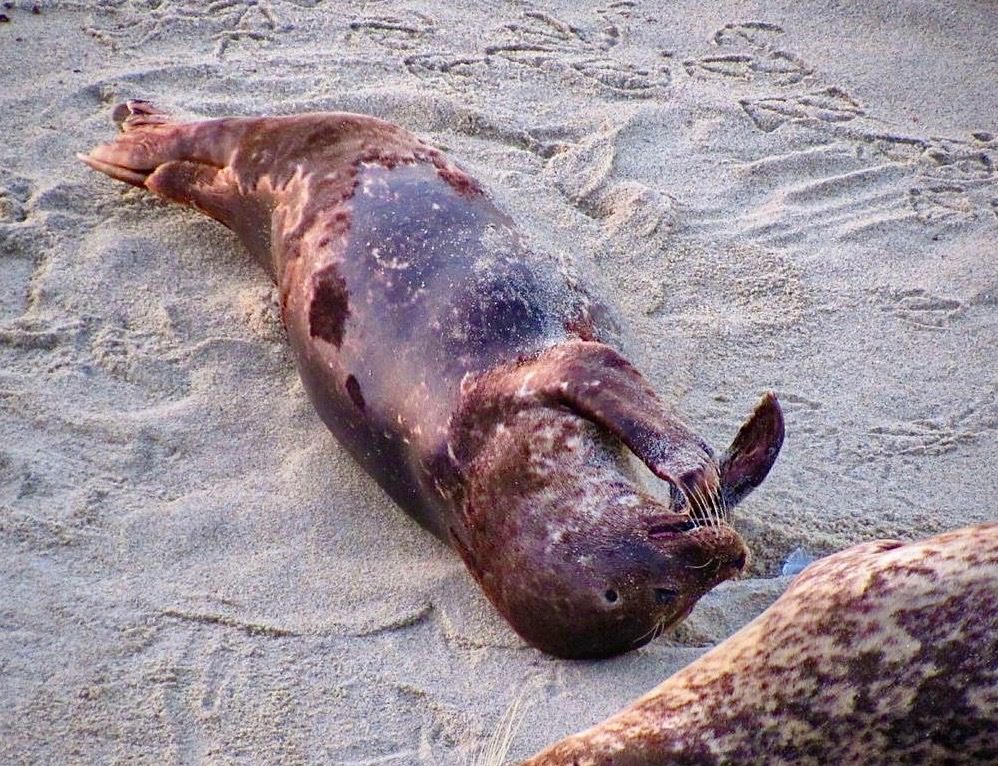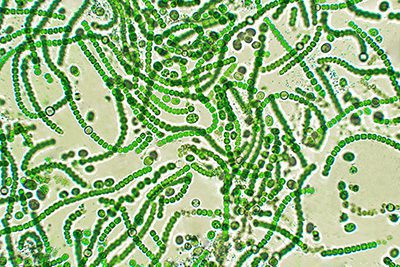Reports of strange behavior among sea lions and washed-up dolphins due to the harmful algal bloom, also known as Domoic Acid poisoning along the coast of Southern California have been overwhelming, while suspected cases in La Jolla remain low.
Harmful algal blooms, or HABs, occur when colonies of algae—plant-like organisms that live in the sea and freshwater—grow out of control while producing toxic or harmful effects on people, fish, shellfish, marine mammals, and birds.
-National Oceanic and Atmospheric Administration (NOAA)
The Centers for Disease Control and Prevention (CDC) says that “Blooms can occur in freshwater, salt water, and brackish (a mixture of fresh and salt) water around the world. Blooms sometimes look like foam, scum, mats, or paint on the surface of the water.
They can even make the water appear in different colors, including green, blue, red, or brown.” Beachgoers may have heard of the arrival of a ‘red tide’ when there’s an algal bloom in and around the coast of La Jolla and seeing the rusty brown-colored water.
What causes a toxic algal bloom?
HABs can be caused by various factors, such as ocean water upwelling, rising water temperature, poor water flow, and other changes to water conditions. Experts believe Southern California’s current bloom is due to the ocean water upwelling. Climate change is also cited as a reason HABs may be more severe or frequent.
Phytoplankton are microscopic plants or algae that play a vital role in our world, with NASA saying it “makes life on Earth possible.” While this may be true, there are different types of phytoplankton, with some being harmful to animals and people: Cyanobacteria, which most commonly blooms in freshwater, and Dinoflagellates and Diatoms (red tide), which typically bloom in saltwater.
Pseudo-nitzschia is a diatom that produces a toxin called Domoic Acid that can cause major neurological issues in those infected. Larger mammals like sea lions and dolphins would become sick after eating fish and shellfish that have fed on the toxin-infused algae.
Symptoms of toxic algal bloom poisoning

<class=”has-text-align-center”>Image via aosanzcam
The toxin can cause unsightly symptoms such as vomiting, muscle spasms, bulging eyes, seizures, disorientation, etc. Marine Mammal Care describes the two most obvious behaviors a sea lion would display if experiencing domoic acid poisoning: “unusual side-to-side head movements, and having their head extended back for fixed periods of time. Animals with Domoic Acid positioning could also become aggressive. Animals who don’t get treatment could die quickly, within minutes or up to a few days.
Rescuers respond
Rescue personnel have been flooded by the increase of calls reporting sick or dead mammals on California beaches and are struggling to keep up. Organizations like the Channel Islands Cetacean Research Unit, the Channel Island Marine and Wildlife Institute, Marine Mammal Care, and SeaWorld San Diego are doing their best to get to the sick animals in time to save their lives.
Saving a sick sea lion can take a team of six to catch the animal, secure it in the container, and transport it to a care facility. With limited resources and other animals being rescued, a sick sea lion could perish before a team can get to it. Channel Island Marine and Wildlife Institute rescuers in June said they received hundreds of calls of sick or dead sea lions and dolphins. In one week, 15 dolphins washed ashore along the coast of Santa Barbara and Ventura County, deaths which they say have now reached over 100.
“The wave of dead or sick animals is “one of the largest in memory. It’s completely overwhelming.”
-Justin Greenman, NOAA Fisheries. CNN.
The San Diego Seal Society says that fewer than ten suspected cases of Domoic Acid poisoning among sea lions were rescued by SeaWorld, but not all came from La Jolla. On June 9, a dead sea lion washed ashore on La Jolla Cove Beach and was collected by NOAA for testing. Although not confirmed, it’s suspected the sea lion died from Domoic Acid poisoning since no other obvious wounds were present.
Fortunately, suspected cases in La Jolla are still very low, especially compared to the devastating number of deaths, in the hundreds, that Southern California’s coastal communities farther North have seen. The San Diego Seal Society is a non-profit organization dedicated to public education about the rookery of harbor seals and California Sea Lions living in La Jolla.
With the increase in crowds during the summer, especially during sea lion pupping season between May and October on Point La Jolla, they encourage the public to review their viewing guidelines for seals and sea lions. Due to the heightened awareness surrounding suspected cases of Domoic Acid poisoning, it’s crucial to know where to safely view them to keep both humans and animals safe.
Algal bloom risk to humans
The CDC recommends that “when in doubt, stay out.” Although most poisoning cases are in sea mammals, there is still a risk to humans if exposed. Humans are only at risk if consuming contaminated seafood. However, the California Department of Public Health requires that seafood be tested for this toxin before being cleared for public consumption.
A recent safety notification warned diners not to eat sport-harvested shellfish from Santa Barbara County. A quarantine of harvested muscles has been in place since May 1 for the entire California Coast. The CDC recommends the public immediately call their healthcare provider or poison control center for anyone at risk or experiencing symptoms.
The California Department of Fish and Wildlife also releases information and any current health advisories regarding fish and shellfish consumption. See more recommendations from the CDC on protecting yourself from harmful algal toxins.
What to do if you see a distressed animal
If you see an animal on the beach who looks distressed, maintain a safe distance of 50+ feet, inform a lifeguard, and if in San Diego, report it to the SeaWorld San Diego Rescue team at 1-800-541-SEAL (7325). When making a report, provide as much detail as possible, including information like:
- Date animal was last seen
- Time the animal was last seen
- Location (name of beach, address, landmark, etc.)
- Size of the animal compared to a dog breed
- Is the animal thin? Can you see its ribs, hips, or spine?
- Is the animal entangled in fishing gear?









